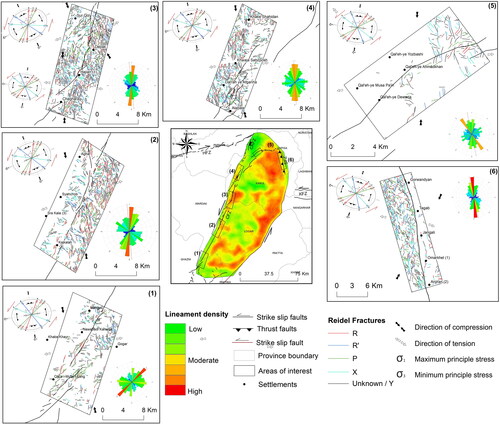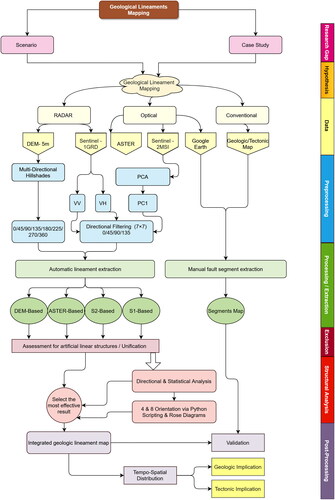Figures & data
Figure 1. Simplified neotectonics and geologic settings of the Kabul Block and surroundings; A) the orogenic segments and structural settings of Afghanistan and Kabul Block modified after (Wheeler et al. Citation2005; Abdullah et al. Citation2008; Siehl Citation2017), B) The simplified geological map of the Kabul Block adapted after (Abdullah et al. Citation2008; Ahmadi and Uygucgil Citation2021), with major faults indicated by red lines from (Ruleman et al. Citation2007; Abdullah et al. Citation2008). fault segments represented by black lines have been adapted from (Ahmadi et al. Citation2022).

Figure 3. Generated shaded relief images from DEM-5m after the azimuthal filter into eight directions: A) 00°, B) 45°, C) 90°, D) 135°, E) 180°, F) 225°, G) 270°, and H) 315°.

Figure 4. Sentinel-1B GRD with VV polarization after Prewitt filter in four directions A) 00° (N-S), B) 45° (NE-SW), C) 90° (E-W), and D) 135° (NW-SE), Sentinel 1B GRD with VH polarization after Prewitt filter into four directions A) 00° (N-S), B) 45° (NE-SW), C) 90° (E-W), and D) 135° (NW-SE).
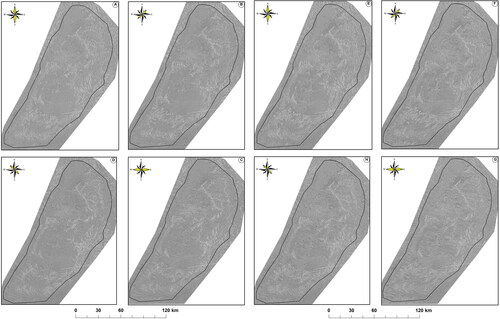
Figure 5. PC1 of Sentinel-2A MSI data after directional filtering into four directions A) 00° (N-S), B) 45° (NE-SW), C) 90° (E-W), and D) 135° (NW-SE), PC1 of ASTER data after directional filtering into four directions A) 00° (N-S), B) 45° (NE-SW), C) 90° (E-W), and D) 135° (NW-SE).

Figure 6. Orientation trends of the extracted lineaments from radar (DEM and Sentinel-1B GRD) and optical data (Sentinel-2A MSI and ASTER) into eight and four directions in the entire Kabul Block.
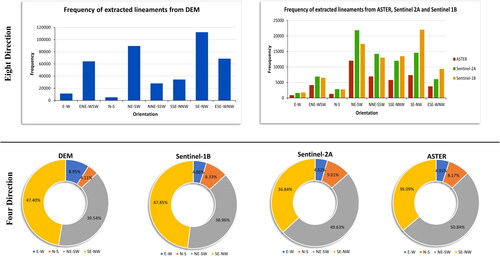
Figure 7. Distribution of lineaments and their orientation pattern in Zone-I extracted from radar data; a) DEM-5m and b) Sentinel-1B GRD.
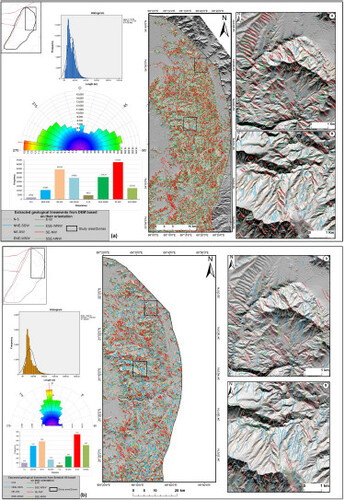
Figure 8. Extracted lineaments superimposed on shaded relief image in Zone-1 of Kabul Block with their spatial pattern based on optical data a) Sentinel-2A MSI and b) ASTER.
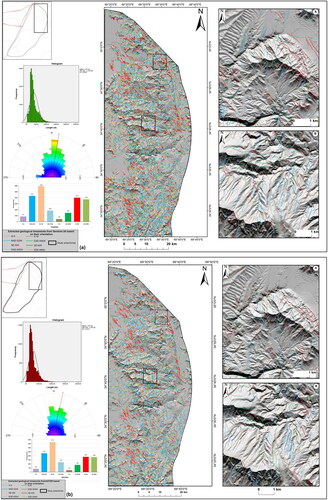
Table 1. The brief statistics of the extracted geological-based lineaments from radar and optical data over the entire Kabul Block.
Figure 9. Distribution of the extracted lineaments within the Zone-II of Kabul Block from; a) DEM-5m and b) Sentinel-1B GRD.
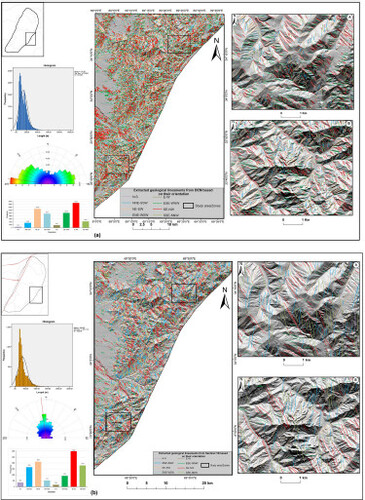
Figure 10. Distribution of the extracted lineaments within the Zone-II of Kabul Block from; a) Sentinel-2A MSI and b) ASTER.
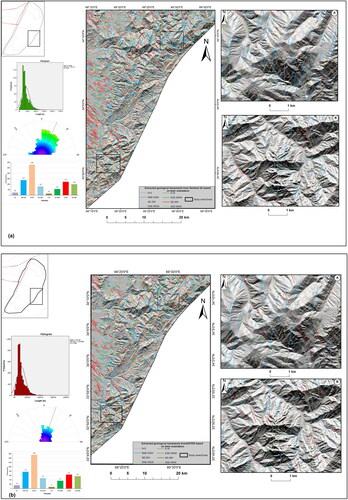
Figure 11. Distribution of extracted lineaments superimposed on hill-shade images within Zone-III and their associated magnified areas from a) DEM-5m and b) Sentinel-1B GRD.
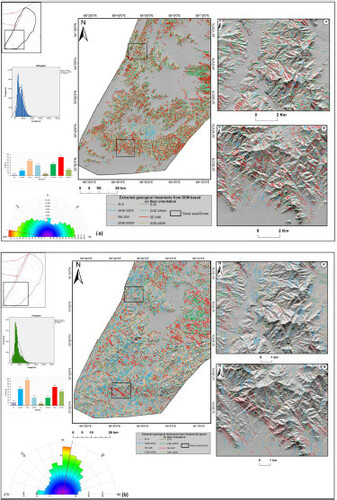
Figure 12. Distribution of extracted lineaments superimposed on hill-shade images within Zone-III and their associated magnified areas from: a) Sentinel-2A MSI and b) ASTER.
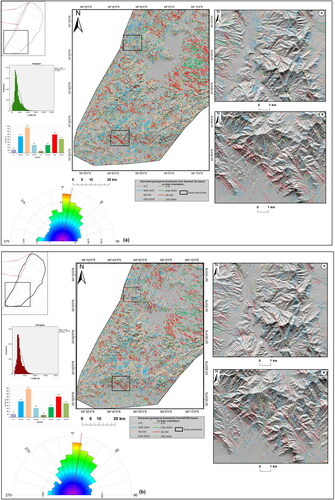
Table 2. Summary of the descriptive statistics of the detected lineaments over the zones I-II-III-IV from radar and optic data.
Figure 13. Superimposition of the detected lineaments with their spatial patterns on a shaded relief map over the Zone-IV generated from: a) DEM-5m and b) Sentinel-1B GRD.
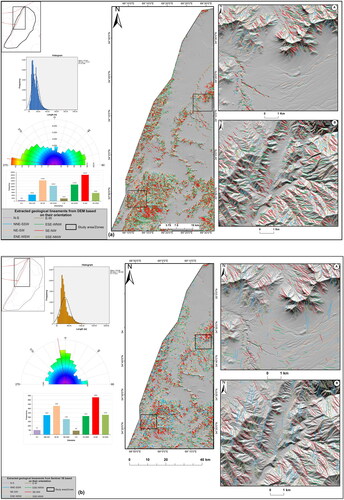
Figure 14. Spatial pattern and distribution of detected lineaments overlayed on hill-shade images from: a) Sentinel-2A MSI and b) ASTER.
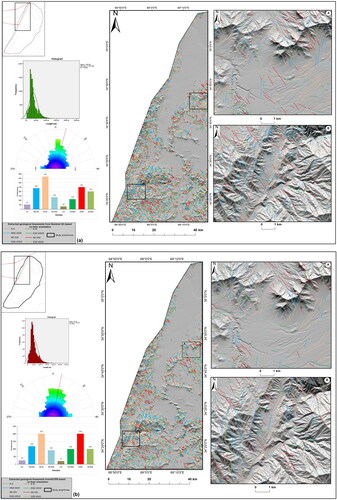
Figure 15. Linear regression plot for the correlation analysis of the detected lineaments from radar (DEM-5m and Sentinel-1B GRD) and optical (Sentinel-2A MSI and ASTER) data.
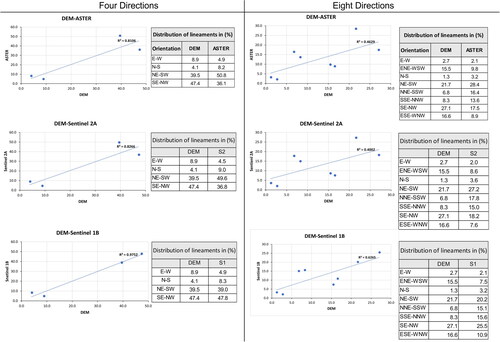
Figure 16. Thematic map showing the spatial density of lineaments superimposed by active fault segments: black fault lines from (Ahmadi et al. Citation2022), and light Blue fault lines are from (Wheeler et al. Citation2005; Abdullah et al. Citation2008).
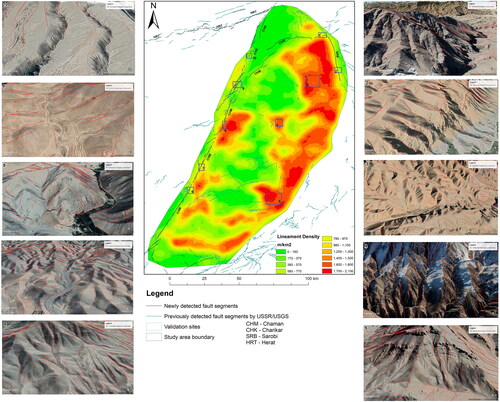
Figure 17. Thematic maps showing the tempo-spatial analysis of the lineament trends over the Kabul Block; a) Zone-I, b) Zone-II, c) Zone-III, d) Zone-IV, and e) overall statistics.
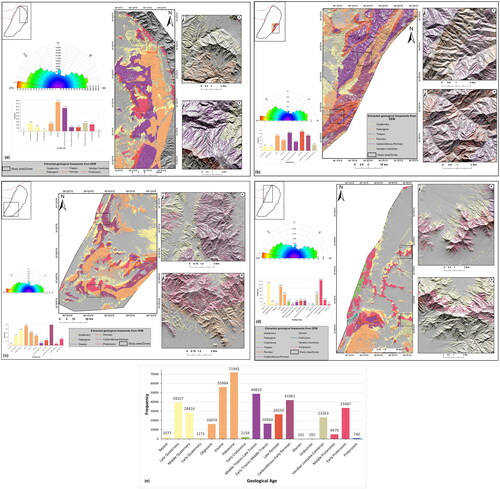
Figure 18. Interpretation of strain ellipse and Riedel shear mechanism model in the western, southwestern, northern, and south-eastern regions of the Kabul Block; R, synthetic Riedel shears; R', antithetic Riedel shears; P, secondary synthetic Riedel shears; X, secondary antithetic Riedel shears.
